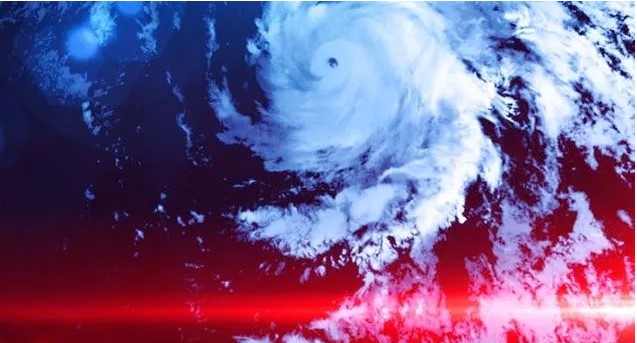Shomporko Desk:-HONOLULU – The primary typhoon to threaten the United States since the beginning of the coronavirus pandemic is introducing new difficulties to Hawaii authorities since quite a while ago acquainted with hurricanes.
For instance, how would you secure enough haven space when individuals need to stay at least 6 feet (1.8 meters) aside from each other? What happens when somebody appears at a safe house with a fever?
Late Thursday, Hurricane Douglas was 1,025 miles (1,810 kilometers) southeast of Hilo and pressing the most extreme supported breezes of 130 mph (215 kph).

It’s expected to weaken as it passes over cooler water yet meteorologists caution solid breezes, overwhelming precipitation and perilous surf could harrow the whole state starting on Sunday.
The storm approaches as Hawaii grapples with increasing COVID-19 numbers. On Thursday, the state reported 55 newly confirmed cases, it is the highest single-day increase since the pandemic began.
“I never thought in 30 years of doing this I’d be answering medical questions,” said John Cummings, the public information office for Honolulu Emergency Management, underscoring the odd position authorities have found themselves in.
Unlike other hurricane-prone states like Florida where residents pile into cars to evacuate when storms approach, it’s impractical to leave Hawaii to get away from a storm. Shelter space is also limited.
So, as is typical, local authorities are urging most people to shelter at home if they can. Those living in homes built according to code after 1995 should be “pretty good to go,” Cummings said.
He recommended staying with friends and family if the home isn’t safe. Seek refuge in an interior room, he said. Going to a city-run shelter should be a last resort, he said.
At shelters, evacuees will have their temperatures checked for signs they may be infected with the coronavirus. People who have been quarantining themselves, either because they recently travelled to Hawaii from out of state or because they have been exposed to someone with the virus, may go to a shelter if their housing situation is unsafe.
Those with high temperatures or a travel history will either be isolated at that shelter or taken to a different site, Cummings said.
Honolulu Mayor Kirk Caldwell said that in “non-pandemic world” the city prepares 10 square feet (1 square meter) per person at shelters. But in order to have 6 feet (1.8 metres) of physical distancing between people, it must allow 60 square feet (6 square meters) per person or family.
“We need more shelter space. And with more shelter space, we need more people to staff those shelters. And we’re working on that right now,” Caldwell said. The city plans to announce a list of shelters on Friday.
Hawaii leaders have been talking to the Federal Emergency Management Agency about potentially housing evacuees in hotels but nothing concrete has been decided yet. Caldwell said such an arrangement may not come together in time for Douglas’ arrival but might be in place for the next storm.
Many of Hawaii’s hotels have empty rooms or are completely closed because the pandemic has shut off most travel to the islands.
Food shoppers have been slower to materialize at The Locavore Store in Hilo.
Owner Catarina Zaragoza predicted people will start buying up toilet paper and water if the storm looks threatening and gets closer.
“So many of our storms dissipate before they get here, so I think if we’re going to see that kind of uptick it probably won’t be till later in the weekend,” she said.
People stocked up on supplies early on in the pandemic, but Zaragoza doubts that’s the reason people weren’t buying.
Photo credit: MGN
News source: The Associated Press











